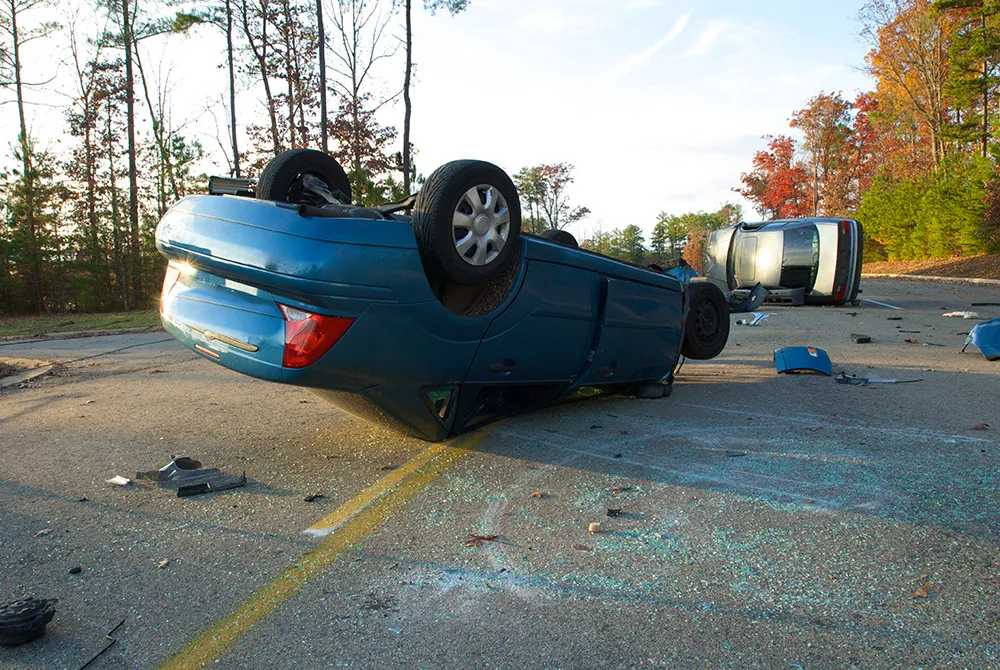
Road crashes place an enormous financial burden on the US, in addition to the massive human impact. Data from the National Highway Traffic Safety Administration (NHTSA) shows that road crashes in the US came with a financial cost of US$340 billion in 2019. More worryingly still, data shows pedestrian deaths are increasing in the US.
The NHTSA report is titled, ‘The Economic and Societal Impact of Motor Vehicle Crashes, 2019.’ Its shocking revelation is that road crashes in the US during 2019 killed an estimated 36,500 people, injured 4.5 million, and damaged 23 million vehicles. The US has a population of around 328 million, so this represents a loss of approximately $1,035 for each citizen.
“This report drives home just how devastating traffic crashes are for families and the economic burden they place on society,” said Ann Carlson, NHTSA’s Acting Administrator.
Even those not involved in crashes end up paying for around 75% of incidents due to higher insurance costs, taxation, lost time and additional fuel use caused by crash-related delays.
However, the report says that when quality of life valuations are considered, the total value of societal harm from motor vehicle crashes in 2019 was nearly $1.4 trillion. The report also looks at the cost of risky driving behaviours that contributed to crashes that led to fatalities, serious injuries and property damage only.
Alcohol-involved crashes resulted in 14,219 fatalities, 497,000 injuries, and $68.9 billion in economic costs in 2019, accounting for 20% of all crash costs.
Crashes involving alcohol levels of .08 BAC or higher are responsible for more than 90% of the economic costs and societal harm from crashes attributable to alcohol use.
Crashes where at least one driver was identified as being distracted resulted in 10,546 fatalities, 1.3 million non-fatal injuries, and $98.2 billion in economic costs in 2019, accounting for about 29% of all crash costs.
Failure to use seatbelts caused 2,400 avoidable fatalities, 46,000 serious injuries, and cost society $11 billion in easily preventable injury-related costs, accounting for about 3% of all crash costs. Seat belt use prevented more than 14,600 fatalities, 450,000 serious injuries, and $93 billion in injury-related economic costs in 2019.
Speed-related crashes are associated with 10,192 fatalities, 498,000 non-fatal injuries, and $46 billion in economic costs in 2019, accounting for 14% of all economic costs. Speed-related crashes cost an average of $141 for every person in the United States.
The report also includes data on the costs associated with motorcycle crashes, failure to wear motorcycle helmets, pedestrian crashes, bicyclist crashes, and numerous different roadway designation crashes.
Nearly 95% of people who die using US transportation networks are killed on streets, roads and highways. Roadway fatalities and the fatality rate declined consistently for 30 years, but progress has stalled over the last decade and went in the wrong direction in 2020 and 2021. The USDOT’s National Roadway Safety Strategy outlines what the Department is doing to address this crisis.
The report is drawn from sources including NHTSA’s Fatality Analysis Reporting System, Crash Investigation Sampling System and the Crash Report Sampling System. However, the report also accesses crashes that have not been reported to the police, using consumer survey data and a variety of other sources.
This report comes in the wake of an earlier one from NHTSA showing that driving under the influence of drink or drugs is a massive problem for road safety in the US. The earlier study shows that over 50% of people killed or injured in road crashes were either under the influence of drink or drugs at the time of the incident. The study was carried out at trauma facilities in a range of major cities in the US states of California, Florida, Iowa, Maryland and North Carolina.
Of major concern is that 20% of the people tested had traces of at least two drugs in the system, with one of the most common being THC as found in cannabis.
Since the use of cannabis was legalised in some US states such as California and Colorado, the incidence of road crashes involving drivers under the influence of the drug has also increased. Determining the level of intoxication from cannabis use is more complex than for alcohol use. Drug tests can show that someone has taken cannabis but it is hard to measure the degree to which a person is affected by the drug. Research does show that the effects of intoxication last considerably longer than most people realise and while someone may think they are safe to drive 90 minutes after taking the drug it can be up to four hours before the effects of the drug have diminished sufficiently for it to be safe to drive.
Worse still, the US is suffering a major crisis in road safety and yet little is being done to address this desperate situation. New data from the Governors Highway Safety Association (GHSA) reveals an increase in pedestrian deaths for the first half of 2022.
The problem is being caused by a combination of factors including dangerous driving, inadequate infrastructure and the use of larger vehicles. Approximately one pedestrian was killed every 75 minutes on average according to the GHSA data.
There were 3,434 pedestrians killed on US roads in the first six months of 2022, an increase of 5% from the same period in 2021. Of concern is the fact that the figures for pedestrian deaths in 2021 were already showing a record high over the previous 40 years.
Compared with the data from 2019 and before the pandemic, there has been an 18% increase in pedestrian deaths in the US. There were 519 more pedestrian deaths in the first half of 2022 compared with 2019, a horrific increase. More shocking still is that pedestrian deaths in the US have shot up by 60% since the 2,141 recorded in 2013.
The GHSA data is based on information from the State Highway Safety Offices (SHSOs). The analysis was carried out by Elizabeth Petraglia, PhD, of research firm Westat. Road deaths increased in 24 US states during the period and fell in a further 21 states. California, Florida and Texas have particularly high rates of pedestrian deaths, accounting for 38% of those killed in the first six months of 2022, despite having only 28% of the US population. Previous research has shown Texas to have the worst record for DUI of any US state, which is likely to be a factor in its poor safety record.
But explaining the reasons for why US roads are more dangerous for pedestrians than before the pandemic may be hard to define completely. Some factors are known. There has been an increase in DUI offences in the US since the start of the pandemic in 2020. Speeding offences have also increased in this time. There are concerns also about the safety of road infrastructure and issues with regard to protecting pedestrians from fast-moving vehicles. Inadequacies with pedestrian protection have been identified on the network.
US road deaths have increased since the start of the COVID-19 pandemic. There were 31,785 road deaths in the US in the first nine months of 2022, according to the NHTSA. This represents a small drop compared with the same period in 2021, but is still far higher than the same period in 2019.
While the current administration in the US has pledged $800 million for safety improvements to roads, this will be a drop in the ocean with regard to what is needed. The money will be used for improving pedestrian walkways, cycle lanes, roundabouts and lighting and will be of benefit. But this will not come close to addressing the many issues affecting road safety in the US. Improving road safety effectively would include making huge improvements in driver training right across the US, tackling speeding and DUI and requiring regular vehicle safety checks. Such measures have been used to good effect in other countries that have had poor road safety records in the past, notably France and Portugal. But until he US bites the bullet and takes proper action, the current carnage on the country’s roads will continue.






